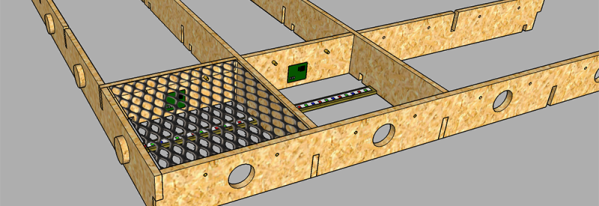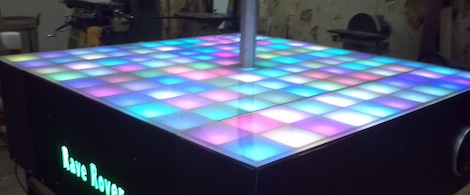If you’ve ever thought about having a light-up dance floor at an event, the chances are you will have been shocked at the rental cost. Doing your best impression of a young John Travolta in Saturday Night Fever doesn’t come cheap, it seems. When faced with this problem before the Furnal Equinox 2017 convention, [Av] and friends decided instead to build their own LED-lit floor.
Their design and build is shown in the video we’ve placed below the break, and though each individual light unit is straightforward it is the scale of the project and its epic build that makes it a very impressive achievement. There are 64 panels of 4 light cells, giving a total of 256 cells and 7680 RGB LEDs arranged as 2560 pixels. Each panel has a shift register PCB interfacing LEDs to the Teensy that controls the floor, and there are also microswitches talking to an Arduino Mega which provides the floor with interactivity. It’s hard to imaging this build would be possible without the people numerous who pitched in at the Toronto Hacklab for the assembly process.
The resulting 17 foot square dancefloor is a work of art, with custom programmed graphics responding to dancers moves, and even a few games along the lines of Dance Dance Revolution built in. After watching the video below, how many of you will secretly want one?
Continue reading “Daunting Interactive LED Dancefloor Build Is Huge Win”


















